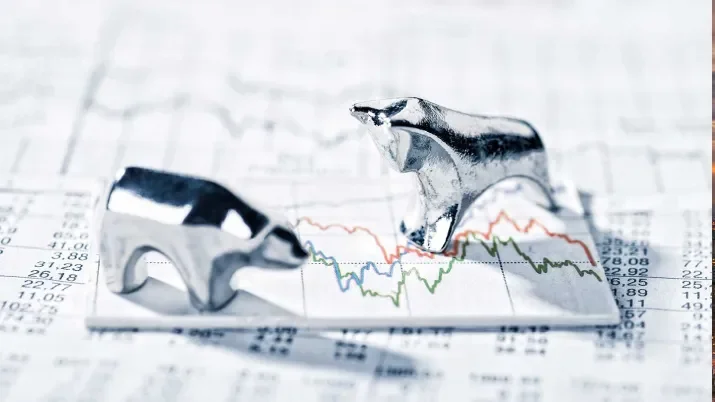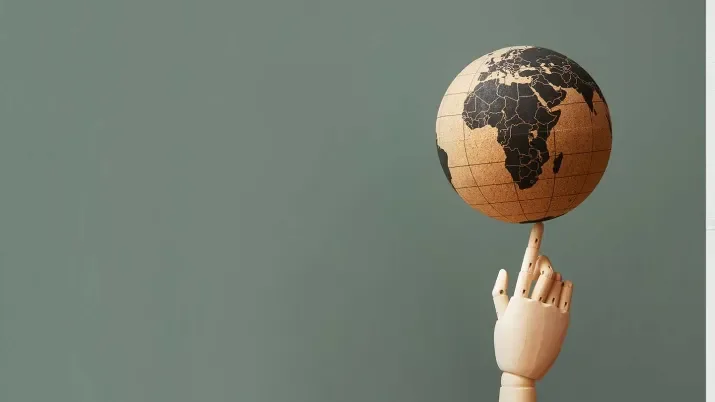Old boxes are golden
Asset management
Ever since the coronavirus crisis struck, e-commerce has been booming, and boxes have been piling up at home as repeated lockdowns have forced consumers worldwide out of stores and in front of screens. This has sparked soaring demand for packaging, such as crates and cardboard, as ordered items must not only be packaged, but also distributed in suitable boxes. Industry experts estimate that consumption of packaging material has risen by around 30% as a result. Therefore, attention is turning to companies that, as well as benefiting from the structural trend of online retail, are encouraging the circular economy through innovative solutions in order to make packaging materials more sustainable. One of these companies is Ireland-based Smurfit Kappa.
Online retail produces lots of waste
In 2020, global online retail increased by 27.6%, reaching a total of USD 4.280 trillion by the end of the year. Whereas Latin America leads the statistics with a growth rate of 36.7%, Western Europe is just below the global average with 26.3%. This year, a growth rate of 14% is expected.1 The online shopping trend is likely to power on also after the pandemic, as many consumers have grown accustomed to the benefits, such as the greater selection and convenient delivery. According to a survey of 1,000 US consumers aged 18-65 conducted by Bank of America, 60% of consumers will increase their online shopping even after COVID-19. Only 17% state that they will shop less online as soon as the pandemic has subsided. However, while online retailers are benefiting from higher sales figures, the environment is suffering, as online retail was already generating huge volumes of waste even before the pandemic. In 2018, Germany accounted for 863,000 metric tons of packaging waste, 96% of which was cardboard and paper.2 The USA consumed 33 million metric tons of corrugated cardboard in the same period. Although 95% was recycled, 9 million tons of other paper and cardboard packaging did not find their way back into the circular economy.3 In Europe, around 50% of the 90 million metric tons of paper products is believed to stem from recycled fibers. By contrast, this factor is estimated at just 35% for India and China.4 These consumption figures are expected to increase considerably given the changes in consumption patterns that the pandemic has triggered.
Smurfit Kappa makes online shopping more sustainable
Companies that support the circular economy can take remedial action. The circular economy concept is geared towards extending the lifecycle of products in order to create advantages for the environment and society. Specifically, this involves using existing materials and products for as long as possible, reprocessing them, and ultimately recycling them, with innovative solutions and processes often being required in order to change conventional procedures and product designs. Therefore, the circular economy has evolved into one of the most important levers for attaining the carbon-neutrality targets of the industrialized nations and the Sustainable Development Goals (SDG) of the United Nations.
Smurfit Kappa is one of the world’s leading manufacturers of paper-based packaging solutions, and has put circular economy principles at the core of its operations. The company produces packaging from recycled and primary raw fibers, and has over 46,000 employees at 370 production facilities in 35 countries. This enables the company to have a lasting influence on the value chain of packaged goods, promoting UN SDG number 12 “Responsible consumption and production”. The company demonstrates its commitment to circular economy principles by using 100% renewable, sustainable primary raw materials to manufacture packaging. In 2019, the company used 6.2 million metric tons of recycled fibers, which covered 75% of its requirements for manufacturing packaging material.
In the long term, the company will be supported by the relentless trend towards packaging-intensive online shopping and demand for sustainable packaging. Although plastic has long been out of favor, it is still in use. In 2019, the company DS-Smith estimated that 8% of plastic packaging could be replaced by paper-based solutions. Smurfit Kappa’s Management is still reluctant to communicate concrete estimates, as paper-based solutions are still more expensive than plastic. However, at the beginning of the year, the EU introduced a tax of EUR 800 per metric ton of non-recycled plastic packaging, which could incentivize companies to switch materials. In addition, Smurfit Kappa might be able to encourage growing numbers of wholesalers to switch despite the price thanks to the continuous development of new, sustainable packaging solutions. Find out more about the Vontobel Fund - Global Environmental Change, investing in firms like Smurfit Kappa.
Beware of OCCs
Nevertheless, the replacement of plastic with paper will drive just a small part of the company's income statement for the time being. Its biggest cost driver is the price of recycled boxes, also known as old corrugated containers (OCCs). OCCs are needed as input material for finished packaging solutions, and are therefore the focal point of the company’s circular economy model. Until the outbreak of the pandemic, OCC prices were on a downward trend after China had banned the import of OCCs in 2018, causing demand to plummet. The rise in online retail triggered by the pandemic put an end to this, when the combined effects of increased demand and reduced recycling capacity due to the lockdown suddenly pushed OCC prices up. Despite more recycling capacity having freed up since last summer, OCC prices have been on the rise again since the start of the year. This is because less cardboard is recycled if cardboard is disposed of by private households rather than by wholesalers. If the OCC price continues to climb, the company’s margins will come under pressure.
In 2021, the company could generate the same earnings from a higher sales volume, which would mean a temporarily lower EBITDA margin of approx. 16.5% (compared with 17.6% in the previous year). Whereas a rising demand volume is likely to increase EBITDA by around 5%, EBITDA will be squeezed by approx. 10% due to rising OCC prices. If the company negotiates well, there are hopes that it can pass the higher packaging material prices on to its customers. In the long term, the company has sound earnings prospects thanks to the online retail boom and the slow but consistent move away from plastic.
- https://www.emarketer.com/content/global-ecommerce-update-2021
- https://www.zeit.de/2020/49/verpackungsmuell-online-handel-nachhaltigkeit-recycling-pfand?utm_referrer=https%3A%2F%2Fwww.google.com%2F
- https://www.epa.gov/facts-and-figures-about-materials-waste-and-recycling/containers-and-packaging-product-specific-data#PaperandPaperboardC&P
- http://www.globenewswire.com/news-release/2021/02/02/2167874/0/en/Global-Paper-Recycling-Market-Report-2020-Market-is-Estimated-to-be-45-5-Billion-in-2020-and-is-Expected-to-Reach-56-2-Billion-by-2025.html







